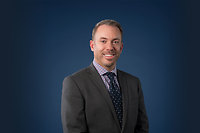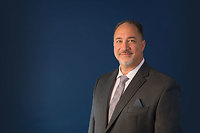In the recent decision Wells Fargo Bank v. Goebel, 2014-Ohio-472, Ohio’s Second District Court of Appeals held that a face-to-face meeting with a borrower was not a condition precedent to a foreclosure action, but instead, an equitable affirmative defense placing the burden of proof of such affirmative defense on the borrower. The Second District Court of Appeals resolved an issue that had been in controversy among various courts in Ohio.
At issue is 24 C.F.R. §203.604, a Code of Federal Regulation applicable to FHA insured loans. In general, this regulation requires a lender to attempt a face-to-face interview with a borrower prior to initiating a foreclosure action, if the lender has an office within 200 miles of the borrower’s residence.
Wells Fargo filed a summary judgment motion in foreclosure against the Borrower, Nicklas Goebel. Goebel opposed the motion for summary judgment with an affidavit that said that “upon information and belief” Wells Fargo had a branch office within 200 miles of his home and that he “did not recall” having a face-to-face meeting with anyone from Wells Fargo prior to the foreclosure action being instituted.
The Second District Court of Appeals held that the face-to-face meeting requirement contained in the Code of Federal Regulations was an affirmative defense, and that Goebel had the burden of proof to establish such affirmative defense. In doing so, the Court rejected Goebel’s argument that it was a condition precedent upon which Wells Fargo had the burden of proof.
Because Goebel’s affidavit did not actually establish that Wells Fargo had a branch within 200 miles of his home, and because his affidavit simply stated that he “did not recall” having a face-to-face meeting with anyone from Wells Fargo, the Second District Court of Appeals held that Goebel did not meet his burden of proof regarding this affirmative defense. Thus, the failure to have a face-to-face meeting would not prevent the Wells Fargo foreclosure action.
The Second District’s decision, if followed by other Ohio districts, will make it more difficult for borrowers to avoid foreclosure actions by taking advantage of this Code of Federal Regulations. Borrowers will need to affirmatively establish that lenders have offices within 200 miles of their home, arguably have to identify such office, and establish by a preponderance of the evidence that no face-to-face meeting was attempted with them prior to the foreclosure action. The Second District’s opinion will also allow banks to file foreclosures without affirmatively having to establish this condition precedent was met.
If you have any questions regarding this opinion or other issues regarding defenses to foreclosure actions, please contact one of the members of our Finance & Creditors Rights and Liabilities Practice Group.
This has been prepared for informational purposes only. It does not contain legal advice or legal opinion and should not be relied upon for individual situations. Nothing herein creates an attorney-client relationship between the Reader and Reminger. The information in this document is subject to change and the Reader should not rely on the statements in this document without first consulting legal counsel.
THIS IS AN ADVERTISEMENT


